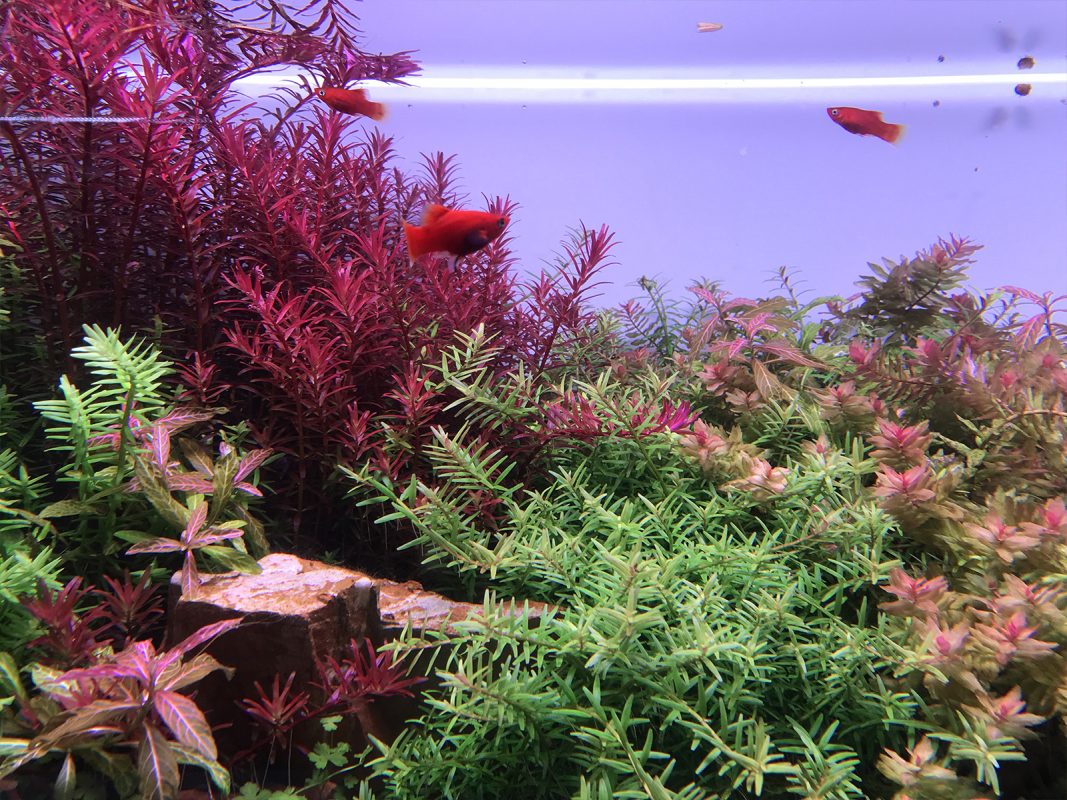Blogs
How Often Should You Add CO2 to Your Aquarium?
Maintaining a thriving planted aquarium requires careful attention to various factors, one of the most crucial being carbon dioxide (CO2) supplementation. CO2 plays a vital role in photosynthesis, the process by which plants produce their own food. Insufficient CO2 levels can lead to stunted plant growth, algae problems, and an overall unhealthy aquarium ecosystem. Therefore, understanding the frequency and amount of CO2 needed for your specific aquarium setup is essential.
Understanding the Importance of CO2 in Planted Aquariums
1. CO2 and Photosynthesis
- CO2 is a vital component of the photosynthetic process, where plants convert light energy into chemical energy stored in glucose.
- Plants absorb CO2 through their leaves and stems, breaking it down into carbon and oxygen.
- The carbon is used to build plant tissues, while the oxygen is released back into the water and atmosphere.
2. Consequences of CO2 Deficiency
- Stunted plant growth: Without sufficient CO2, plants cannot efficiently perform photosynthesis, leading to slow or stunted growth.
- Algae problems: Low CO2 levels can create an imbalance in the aquarium, favoring algae growth over plant growth.
- Nutrient deficiencies: CO2 deficiency can affect the uptake of other essential nutrients by plants, further hindering their growth.
Factors Affecting CO2 Injection Frequency
1. Plant Type and Density
- Different plant species have varying CO2 requirements.
- Densely planted aquariums require more CO2 compared to sparsely planted ones.
2. Tank Size and Lighting Intensity
- Larger tanks require more CO2 to maintain sufficient levels throughout the water column.
- Higher lighting intensity increases the rate of photosynthesis, requiring more CO2.
3. Water Temperature and Hardness
- Colder water can hold more CO2 than warmer water.
- Soft water releases CO2 more easily compared to hard water.
4. CO2 Injection Method
- Different CO2 injection methods have varying diffusion rates, affecting the frequency of CO2 injection.
Methods of CO2 Injection
1. DIY CO2 Generators
- Yeast and sugar-based systems produce CO2 through fermentation.
- Less expensive and easier to set up compared to other methods.
- CO2 production can be inconsistent and may require frequent adjustments.
2. Chemical CO2 Systems
- Use pre-filled canisters of CO2 that release gas into the water through a diffuser.
- Convenient and portable, but can be more expensive than DIY options.
3. Standard CO2 Tanks
- Compressed CO2 tanks offer precise control over CO2 injection.
- The most reliable and efficient method, but requires more investment and maintenance.
Monitoring CO2 Levels
1. CO2 Drop Checkers
- Change color based on the dissolved CO2 concentration in the water.
- Provide a visual indication of CO2 levels, but may not be accurate for all situations.
2. Electronic CO2 Monitors
- Provide real-time readings of dissolved CO2 levels.
- More accurate than drop checkers, but can be more expensive.
3. Observing Fish Behavior
- Labored breathing or gasping at the surface can indicate low CO2 levels.
- Should be used in conjunction with other monitoring methods for accurate assessment.
Optimizing CO2 Injection
1. CO2 Injection Duration
- Turn on CO2 injection when the lights turn on and turn it off before the lights turn off.
- Ensure CO2 is available during the photosynthetic period.
2. CO2 Bubble Counting
- Count the number of bubbles per minute for a consistent CO2 injection rate.
- Adjust the bubble rate based on plant growth and CO2 monitoring.
3. CO2 Diffuser Placement
- Place the diffuser near water flow to ensure even distribution of CO2.
- Avoid placing it directly under the filter outflow to prevent gas escape.
Safety Considerations
1. Over-CO2
- Excessive CO2 can be harmful to fish and other aquatic life.
- Monitor CO2 levels closely and adjust the injection rate if necessary.
2. CO2 Tank Handling
- Use proper safety equipment when handling CO2 tanks.
- Store tanks in a well-ventilated area away from heat sources.
FAQs
1. How often should I change my CO2 tank?
- The frequency depends on the tank size and CO2 consumption rate. Typically, a 5-pound CO2 tank lasts for 2-3 months in a 20-gallon aquarium.
2. Can I use too much CO2 in my aquarium?
- Yes, over-CO2 can be harmful to aquatic life. Monitor CO2 levels closely and adjust the injection rate accordingly.
3. How can I tell if my CO2 levels are too low?
- Observe plant growth and fish behavior. Stunted plant growth and labored breathing in fish may indicate low CO2 levels.
4. What is the best CO2 injection method for my aquarium?
- The best method depends on your budget, aquarium size, and personal preference. DIY generators are budget-friendly, chemical systems are convenient, and standard CO2 tanks offer the most control and reliability.
5. How do I adjust the CO2 bubble rate?
- Use a bubble counter to measure the number of bubbles per minute. Adjust the regulator to increase or decrease the bubble rate as needed.
Conclusion
Maintaining optimal CO2 levels in your planted aquarium is crucial for promoting healthy plant growth and a balanced ecosystem. By understanding the factors affecting CO2 requirements, choosing the appropriate injection method, and monitoring CO2 levels regularly, you can create a thriving underwater environment for your aquatic plants and fish.

